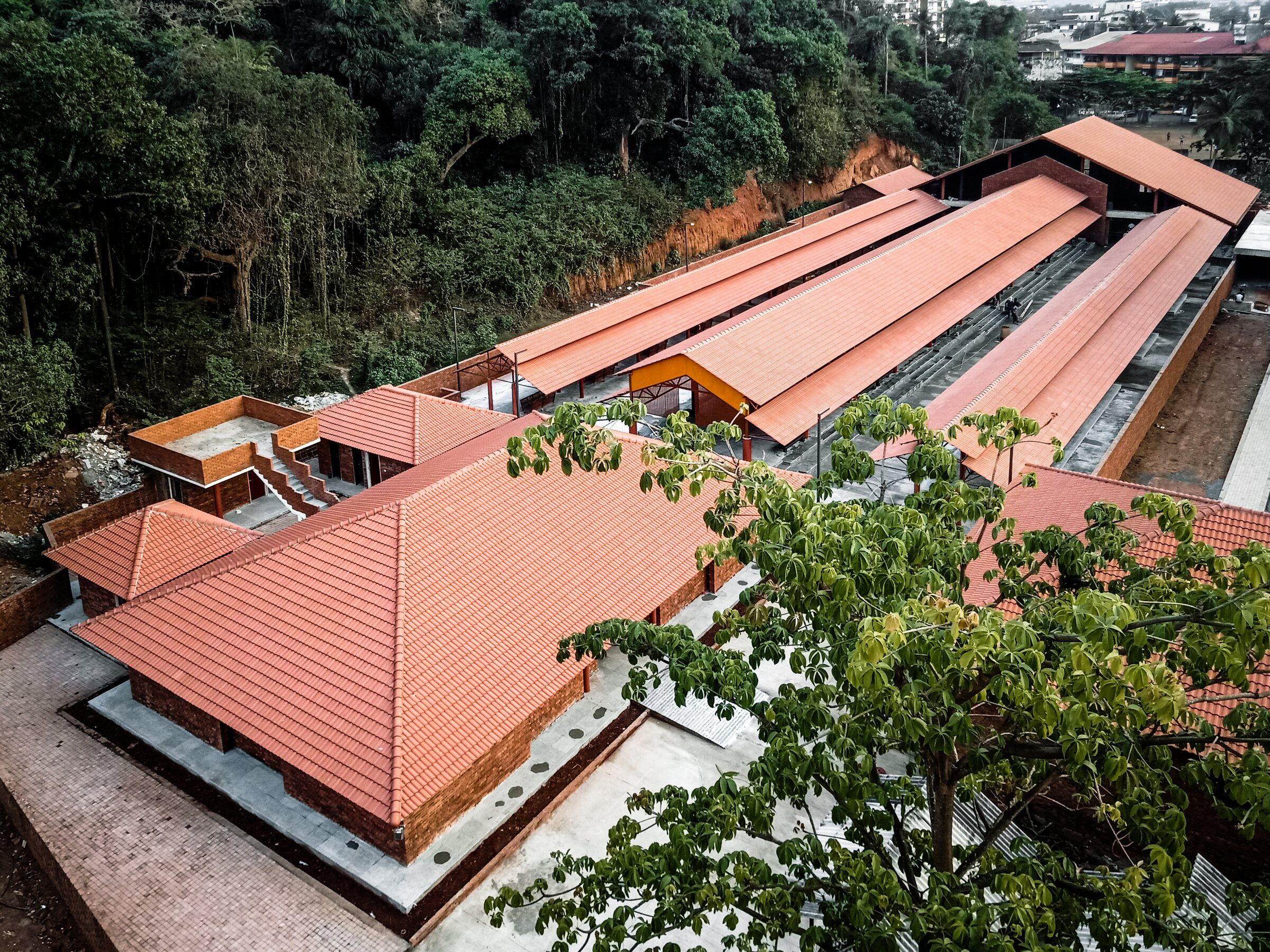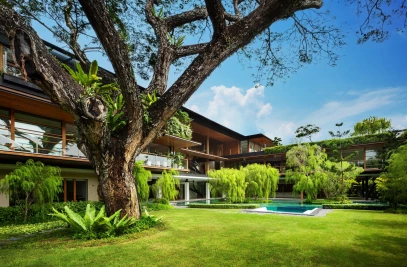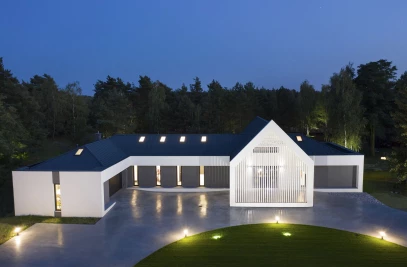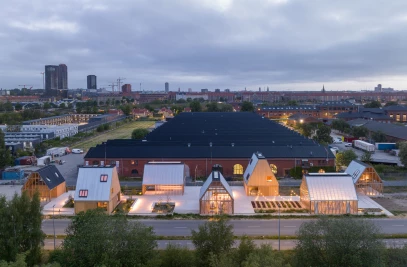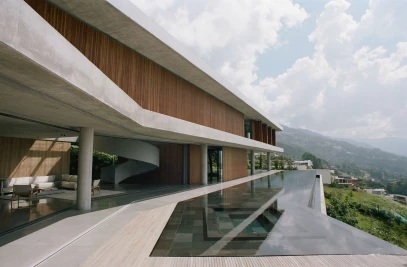Built on a shared parcel of land amongst diverse religious groups to perform their last rites, Moksha relooks at crematorium architecture as a spatial journey into oblivion. Designed by Rahul Deshpande and Associates, the project respects the religious sentiments of the respective groups by adopting a universal language towards design while giving each community a sense of identity.

Using exposed bricks in their natural form and colour from the local kiln became the crux of the project, representing the raw emotions and harmony common to all the diverse groups involved.

The name of the project, “Moksha” translates to a Sanskrit word meaning the ultimate freedom, a state of transcendence achieved after being liberated from the cycle of rebirth. The design seeks to follow the same path. Simple geometry, the relaxing play of solids and voids and the slow transition into a space with minimal use of light work together to convey calm and silence.

Simple masonry in English bond is carefully crafted with concrete columns and a steel structure covered by a pitched local clay tile roof. The massive volume in the lobby, barely lit with a skylight, symbolizes loss and the perpetual state of mind.
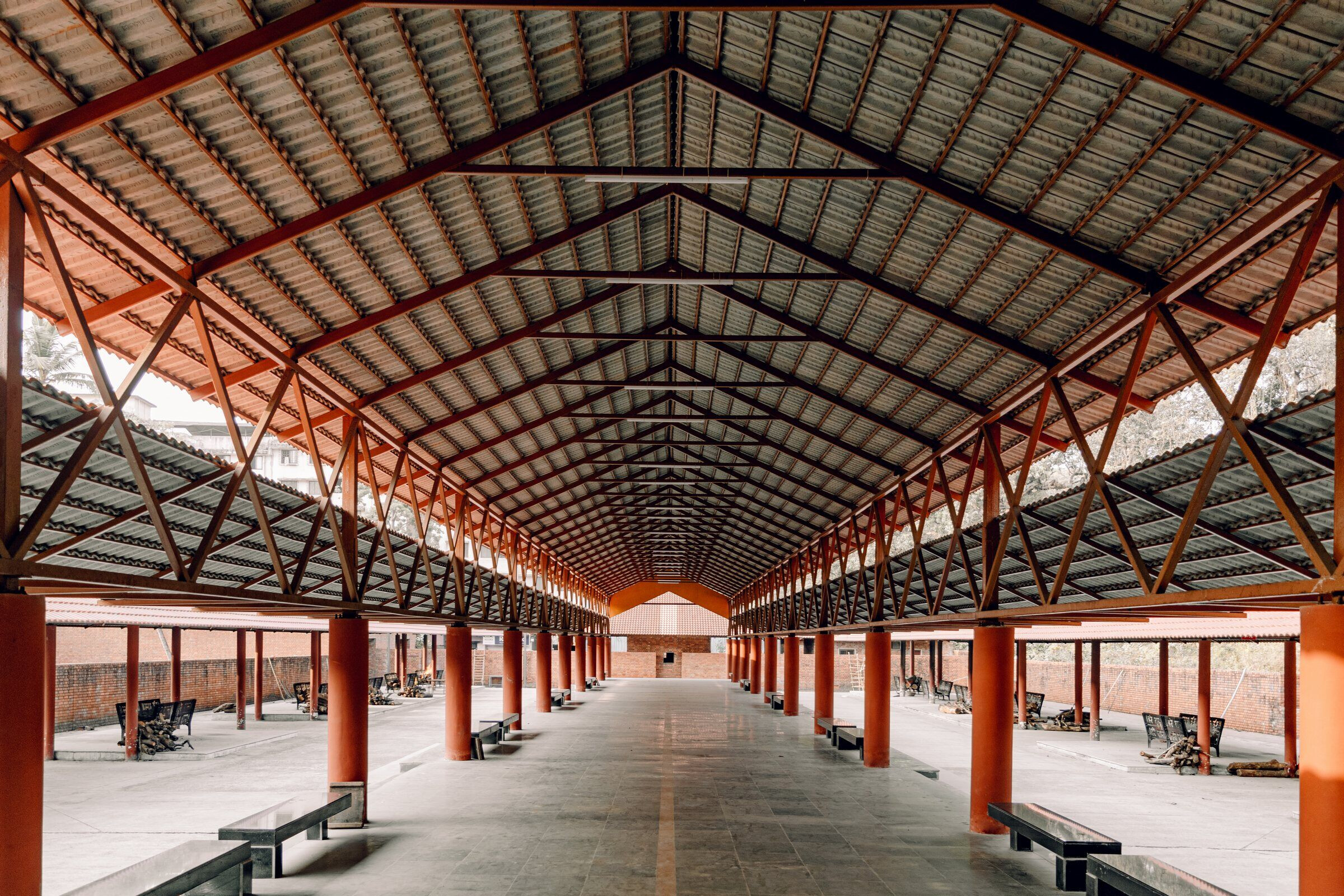
As one passes through the lattice structure, they reach the final point, the pyres. Placed underneath a shelter similar to a small countryside house, the space gives the impression that the loved one is leaving their home rather than a burning pyre.
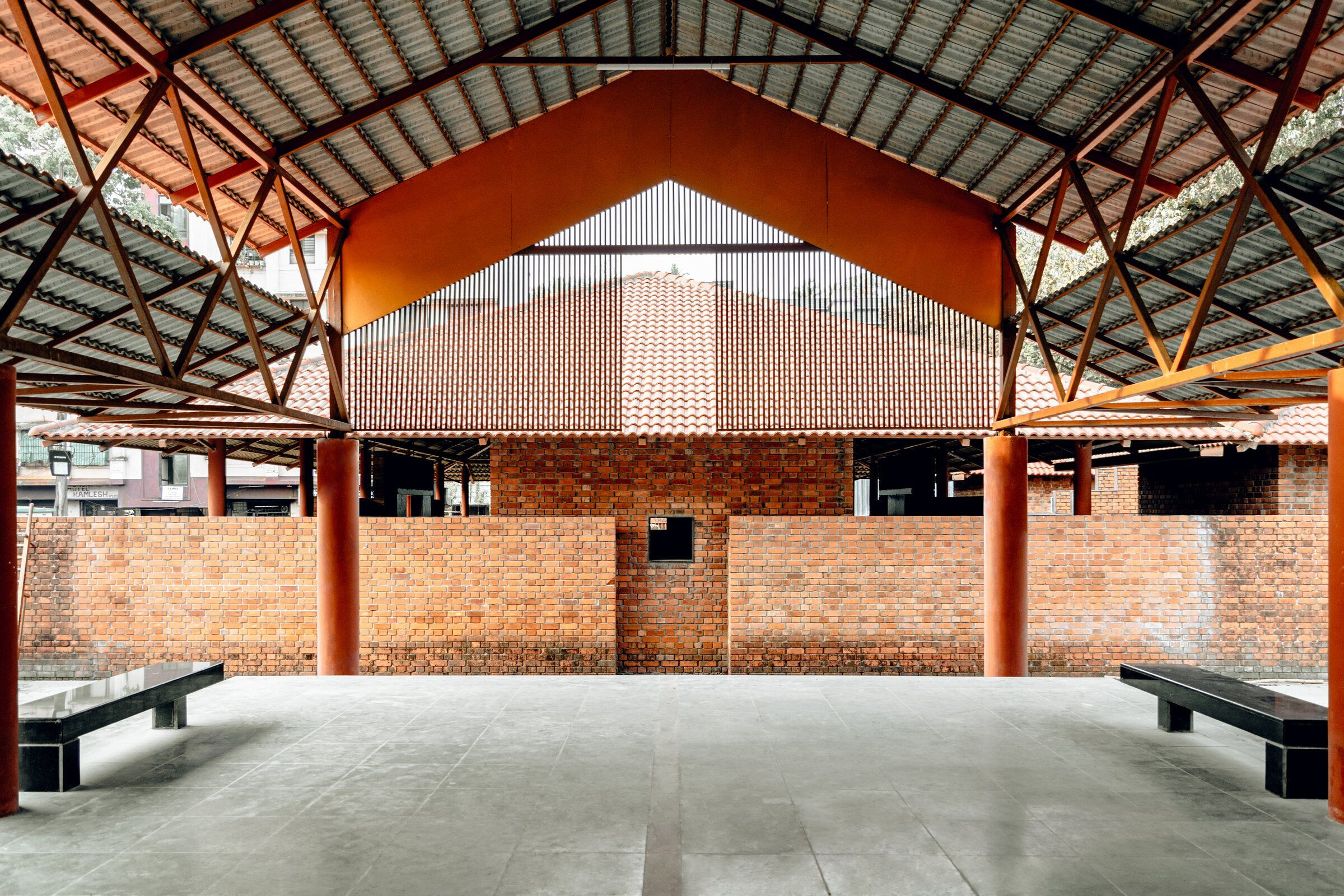
Thus, the architectural space articulates the mourners’ state of mind, providing spiritual and mental consolation spatially.
